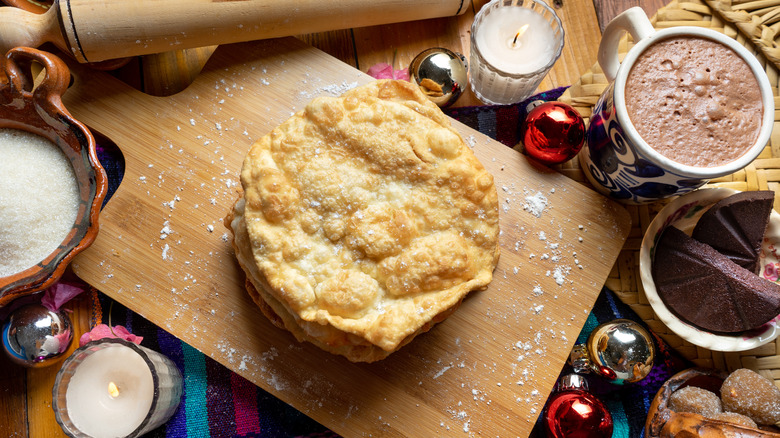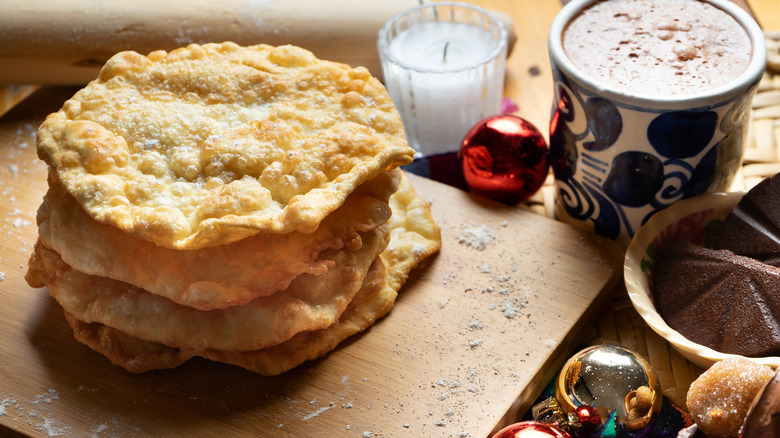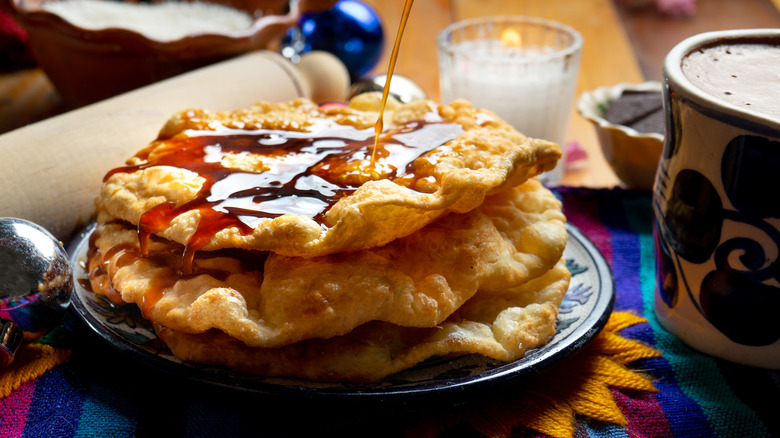Buñuelos De Rodilla Are Delectable Mexican Fritters Made For The Holidays
Plenty of foods from around the world are named after human body parts because they supposedly look like them (even if the resemblance is dubious at best). For example, the word "pretzel" is descended from a Latin word meaning "little arm," and "orecchiette" translates from Italian as "little ears." But German and Italian food are hardly the only ones with this trend. Mexican food has its own food named after a body part: Buñuelos de rodilla, known for their association with Christmas, and whose name translates as something like "knee fritters."
But wait, what gives? They don't look like knees at all! The thing is, they're not meant to: Their name doesn't come from what they look like but from how knees are traditionally part of the baking process. Buñuelos de rodilla was typically shaped across the knees of the women who baked them, giving them their signature stretched-out shape.
Buñuelos de rodilla are made from ingredients you already have
While forming the buñuelos de rodilla with one's knees is the traditional way, in modern times, it's far more common — and significantly less labor-intensive — to simply make them using a rolling pin. You're also supposed to slap the dough on the kneading surface to work a bit of air into it. This gives the buñuelos a lighter, more airy texture.
As for the ingredients themselves when you're forming the dough, buñuelos de rodilla are thankfully not made with anything particularly difficult to find; it's more about the technique than anything esoteric that goes into them. The common components are classic kitchen staples like eggs, flour, sugar, baking powder, and some type of fat (recipes can include butter, oil, or even pork fat, aka "manteca," depending on who you're talking to). After you slap the dough and let it rest for a couple of hours, you roll them out (or stretch them across your knees if you really want to be traditional), then fry them in oil. All in all, it's a pretty uncomplicated cooking process.
Buñuelos de rodilla have their own unique syrup
While these delicious treats are eaten at times other than Christmas, they're heavily associated with the holiday. They're sometimes called "Christmas fritters" and are typically eaten on Christmas Eve with warm drinks. They're typically served crispy (hence the frying process), though they can also be soaked in their signature syrup, the other important aspect of this dish.
Buñuelos de rodilla can certainly be served topped with sugar. Still, they're better known for having a different signature topping: A syrup made from piloncillo, an unrefined cane sugar that forms the basis of much of sweet Mexican baking. From there, the syrup is traditionally flavored with cinnamon and anise, giving it somewhat of a licorice-like flavor, unlike the maple syrup you'd get with pancakes. You can also add guava and orange peel (guava might be the only ingredient you could have trouble finding) as additional flavorings, giving the syrup an even greater depth of flavor.
Next time you're looking for a Christmas treat, consider trying buñuelos de rodilla. You should never be afraid to try things you haven't had before — especially when they're so obviously delicious.


